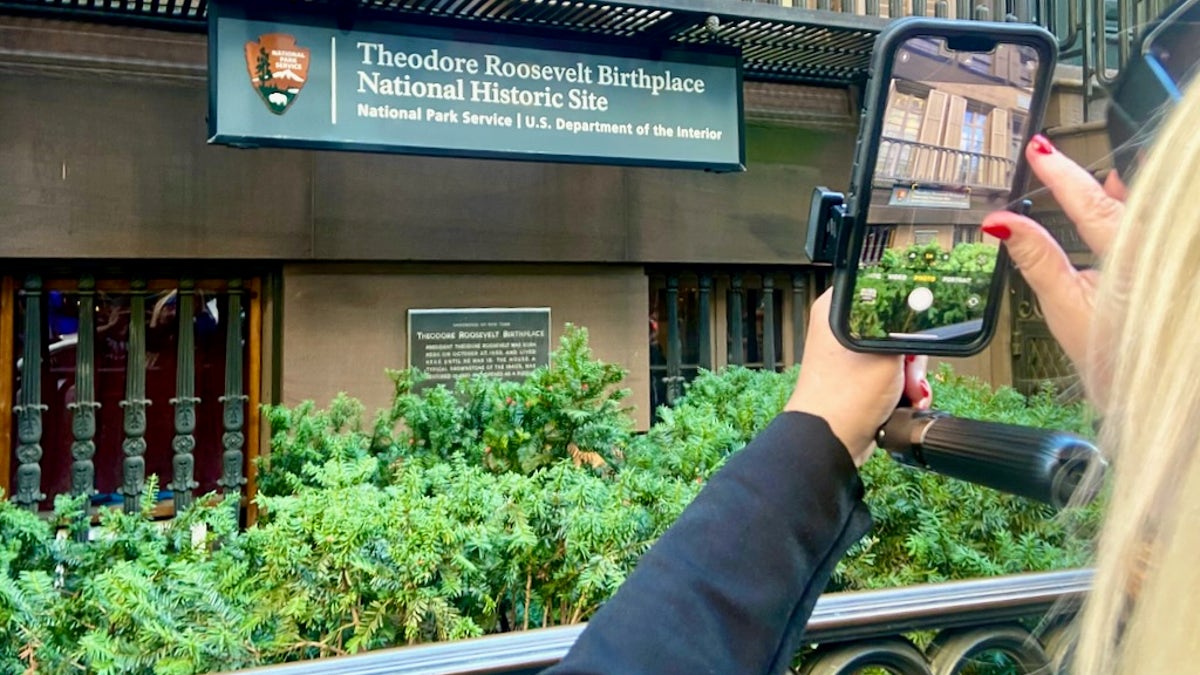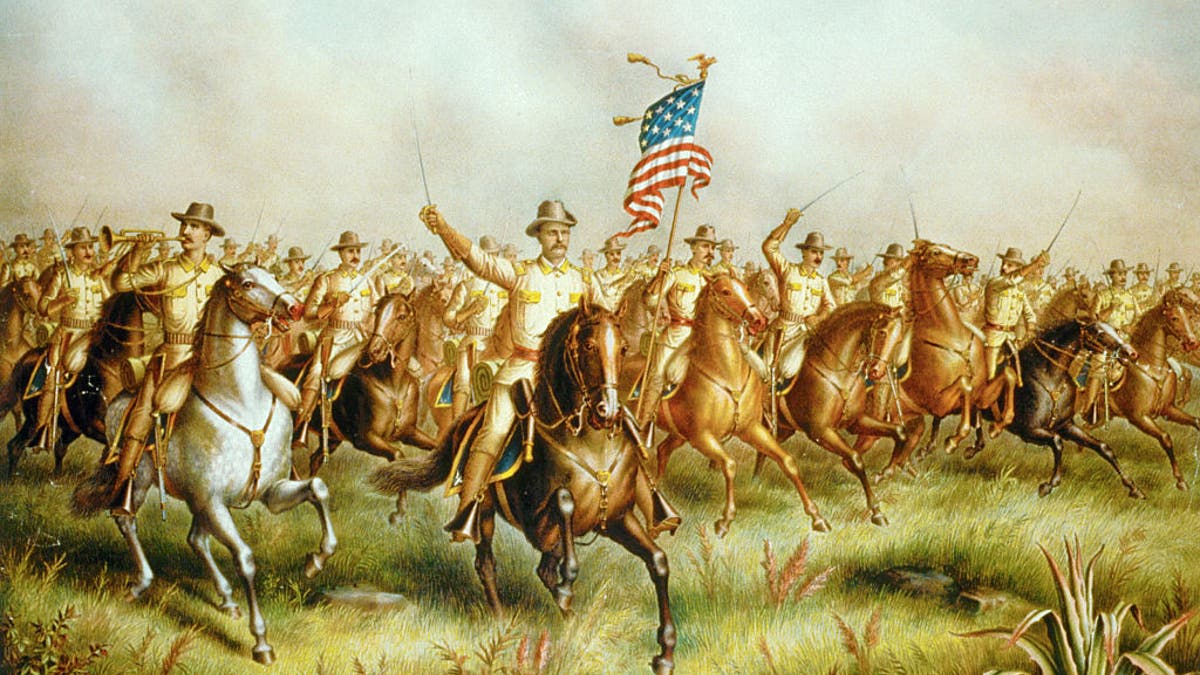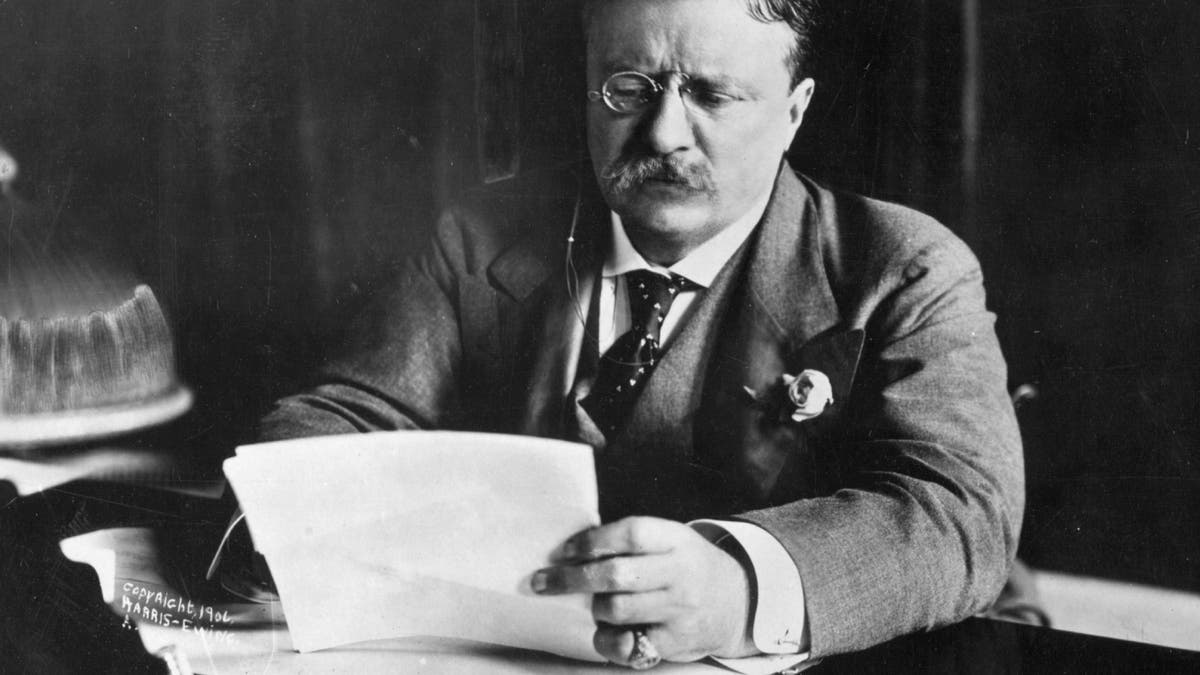Ben Stiller suggests Theodore Roosevelt statue be replaced by Robin Williams'
Sunday Ben Stiller took to Twitter to suggest replacing the statue of former President Theodore Roosevelt outside the American Museum of Natural History with one of late actor Robin Williams.
Theodore Roosevelt, a titan of political progressivism, war hero, champion of American exceptionalism, Nobel Peace Prize recipient and 26th president of the United States, was born in New York City on this day in history, Oct. 27, 1858.
He left a massive imprint on both our national heritage and physical landscape and set in motion the ascendancy of the American Century.
Among other astounding achievements, he remains the youngest man to become U.S. president, reaching the Oval Office at age 42.
"Roosevelt’s youth differed sharply from that of the log cabin presidents," reports WhiteHouse.gov, the official website of the presidential mansion, in its report of the 26th president. It cited "The Presidents of the United States of America" by Frank Freidel and Hugh Sidey.
"He was born in New York City in 1858 into a wealthy family, but he too struggled against ill health — and in his triumph became an advocate of the strenuous life."
His first wife, Alice Lee Roosevelt, as well as his mother died on the same day in 1884, launching Teddy Roosevelt onto a path that would reshape both his personal destiny and that of the nation.

Travel writer Karen Loftus snaps a photo of the Theodore Roosevelt Birthplace National Historic Site in Manhattan, where the 26th president was born on Oct. 27, 1858. (Kerry J. Byrne/Fox News Digital)
"Roosevelt spent much of the next two years on his ranch in the Badlands of Dakota Territory," writes WhiteHouse.gov.
"There he mastered his sorrow as he lived in the saddle, driving cattle, hunting big game — he even captured an outlaw." On a visit to London, he married Edith Carow in December 1886.
He galloped into military lore on July 1, 1898, leading the Rough Riders in the Battle of San Juan Hill, during the United States' swift victory in the Spanish-American War.

Theodore Roosevelt standing on a podium pointing into the crowd during a campaign rally speech,1900s. (Getty Images)
"Among Theodore Roosevelt's many lifetime accomplishments, few capture the imagination as easily as his military service as a 'Rough Rider,'" reports the National Park Service.
"He led a series of charges up Kettle Hill towards San Juan Heights on his horse, Texas, while the Rough Riders followed on foot. He rode up and down the hill encouraging his men with the orders to ‘March!' He killed one Spaniard with a revolver salvaged from the Maine. Other regiments continued alongside him, and the American flag was raised over San Juan Heights."
Republican presidential candidate William McKinley tapped Roosevelt as his running mate in the 1900 campaign.
He called the victory the "great day of my life," writes the NPS.
He parlayed his fame from the battle into the New York governorship in 1899 and 1900. Republican presidential candidate William McKinley tapped Roosevelt as his running mate in the 1900 campaign.

A lithograph showing Theodore Roosevelt leading the Rough Riders during their charge of San Juan Hill, near Santiago de Cuba, on July 1, 1898. (Library of Congress/Corbis/VCG via Getty Images)
He became the youngest president in U.S. history, just 42 years old, amid tragic circumstances, when McKinley was assassinated on Sept. 14, 1901.
"As president, Roosevelt held the ideal that the Government should be the great arbiter of the conflicting economic forces in the Nation, especially between capital and labor, guaranteeing justice to each and dispensing favors to none," reports WhiteHouse.gov.
He served nearly two full terms in office, then ran for a non-consecutive third term in 1912 as the head of the Progressive Party, following a split with the GOP.

Theodore Roosevelt (1858-1919), 26th president of the United States (1901-09), is shown sitting at his desk working, circa 1905. (Hulton Archive/Getty Images)
He outgained sitting president William Howard Taft in the election, but lost the White House to Democrat Woodrow Wilson.
Despite towering achievements that made him a hero of the progressive movement for more than a century, his legacy has been savaged recently by the same movement.
THEODORE ROOSEVELT STATUE REMOVED FROM FRONT OF NYC'S MUSEUM OF NATURAL HISTORY
The American Museum of Natural History in Manhattan, an institution Roosevelt championed in his hometown, removed the statue of him on horseback from its Central Park West location earlier this year.
His Manhattan birthplace, a part of the National Park Service, was closed throughout the COVID-19 and reopened just last month.
Roosevelt's image was chiseled in perpetuity in the American landscape he loved as one of four presidents immortalized in Mount Rushmore, alongside George Washington, Thomas Jefferson and Abraham Lincoln.
Roosevelt's name and image have been cited frequently on the hit TV show "Blue Bloods."
"Let us place there, carved high, as close to heaven as we can, the words of our leaders, their faces, to show posterity what matter of men they were," wrote sculptor Gutzon Borglum of his monumental relief.
"Then breathe a prayer that these records will endure until the wind and the rain alone shall wear them away."
In a more contemporary and less permanent iconography, Roosevelt's name and image were still cited frequently on the hit TV show "Blue Bloods," where his portrait hangs in the office of the show's fictional New York City police commissioner Francis Reagan (Tom Selleck).
Roosevelt served as New York City's top cop from 1895 to 1897.

Bloodstained shirt worn by President Theodore Roosevelt, photographed following an assassination attempt by New York saloon keeper John F. Schrank, on Oct. 14, 1912, in Milwaukee, Wisconsin. (Harlingue/Roger Viollet via Getty Images)
In one almost superhero-like incident that fueled his coveted muscular American image, Roosevelt was shot in the chest by a would-be assassin on the campaign trail in 1912 while running for a third term as president.
For more Lifestyle articles, visit www.foxnews.com/lifestyle
The speed of the bullet was slowed by the contents of Roosevelt's coat pocket, preventing it from being a lethal strike.
CLICK HERE TO SIGN UP FOR OUR LIFESTYLE NEWSLETTER
He went on to deliver his 84-minute campaign speech, with the bullet lodged in his chest and blood soaking his white shirt, before he was rushed to the hospital.
Roosevelt later said of his resolute reaction to the assassination attempt: "In the very unlikely event of the wound being mortal I wished to die with my boots on."
CLICK HERE TO GET THE FOX NEWS APP
Roosevelt went on to live for another six-and-a-half years after the shooting.
He passed away in Jan. 1919 at age 60.


